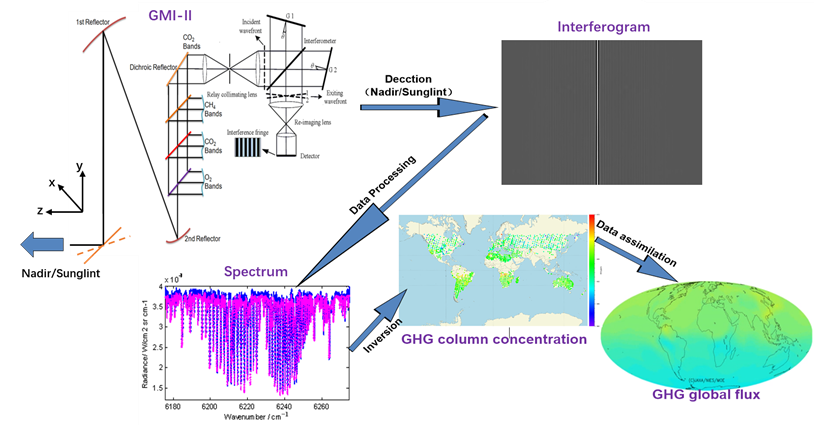
A novel phase correction algorithm of interferometric data for the optimally designed Greenhouse gases Monitoring Instrument-II (GMI-II) was developed recently to meet the greenhouse gases detection demand.
This research, which was published in Remote Sensing and Optics Express, was conducted by a team led by Prof. XIONG Wei from the Anhui Institute of Optics and Fine Mechanics (AIOFM), Hefei Institutes of Physical Science (HFIPS) of Chinese Academy of Sciences (CAS).
Satellite remote sensing is one of the most important means of calibrating global greenhouse gas emission inventories. Trace variations in greenhouse gas concentrations place extremely high demands on the detection accuracy of carbon monitoring payloads. In response to many requirements such as high sensitivity, high stability and high timeliness, hyperspectral resolution technology has become an advantageous way to achieve remote sensing detection of greenhouse gases.
XIONG Wei's team was the first to propose the quantitative monitoring of atmospheric greenhouse gas absorption spectra using spatial heterodyne spectroscopy (SHS). The GMI-II developed with SHS was successfully launched on board the Gaofen-5 satellite-II.
Complex phase distortion happens in the instrument's observation data. Based on the analysis of the distortion mechanism of interferometric data, the team used the monochromatic light interferometric data to first extract and correct for the instrument's inherent spatial phase distortion, then correct the frequency-dependent phase distortion to achieve high accuracy recovery of the target spectra.
The algorithm was validated using in-orbit observations of the GMI-II. Compared to the conventional phase correction algorithm.It reduced the RMS of the corrected spectrum by 81.37%, which is more accurate.
The related research was funded by the National Key Research and Development Program of China, the National Natural Science Foundation of China and the Key Research Program of the Chinese Academy of Sciences.

Figure 1. Schematic diagram of the GMI-II's detection principle. (Image by WANG Qiansheng)

Figure 2. Correction spectra Comparison of the novel correction algorithm and Forman method that has the best phase correction effect among traditional phase correction methods for each GMI-II channel: (a) CO2-1 channel; (b) CH4 channel; (c) CO2-2 channel. (Image by WANG Qiansheng)

Global distribution of XCO2 and XCH4 column concentration data from the GMI-II. (Image by WANG Qiansheng)